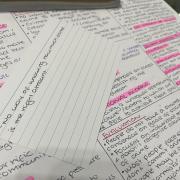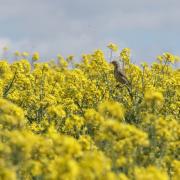
On the blustery, wet morning of Thursday 29th October, the Wingfield Sculls 2020 got underway.
This year marks 190 years since the event first started in 1830, initiated by barrister Henry C. Wingfield after a drunken dinner. Ever since, the race has flourished, attracting some of the UK’s best scullers to compete for the coveted title of ‘Champion of the Thames’, and for the accompanying pair of silver sculls awarded to the winner.
With the closure of Hammersmith Bridge, slight adjustments were made to this year’s course. The scullers would usually race the 6.8km stretch of river between Putney Bridge and Chiswick Bridge known as the Championship Course, most famously used in the annual Oxford v Cambridge Boat Race. Instead, the course this year started at St Paul’s Boat Club (BC), and ended just beyond University of London BC.
The women’s race began at 10:30am, with the six competitors sculling side by side from the start line beside St Paul’s BC. Amid driving rain but relatively calm conditions, Mathilda Hodgkins-Byrne of Reading Rowing Club (RC) placed first with a fairly comfortable lead of two boat lengths, followed by her sister, Charlotte (University of London BC), and Leander Club sculler Hannah Scott. The men’s race followed at 11:45am, with Matt Haywood (Nottingham RC) ultimately storming ahead to take a decisive win, and Angus Groom (Leander Club) and Sam Meijer of Tideway Sculling School (last year’s winner) taking second and third places respectively.
Charlotte Hodgkins-Byrne, second in the women’s race and sister of winner Mathilda, said she “absolutely loved the race”, explaining that it was “amazing to get some side by side in with a strong field”. When asked about her strategy, Charlotte mentioned that she put a lot of thought into the beginning of the race, knowing that it would be vital to get a good start and then attack hard. “I knew that in this race it would be super important to hold my nerve and try to not let anyone push me off course”, she added.
Despite the change in course, the challenges of the race were not diminished, with the Wingfield Sculls retaining its unpredictable nature. The course commands more than just athletic ability, with each competitor having to contend with a range of obstacles. The sharp bends of the course, combined with the varying speed of the stream, require consideration, and each athlete would carefully have planned their strategy before competing. Moreover, the shape of the course is accompanied by a range of unknowns, as the Tideway is part of a working river. Today, this took the form of an RNLI vessel leaving a large wash behind, but this can include anything from tough conditions to rogue pieces of driftwood, or even the possibility of collisions. For this reason, scullers of international pedigree have often placed behind those able to navigate the Tideway more expertly.
The possibility of further races this season remains to be seen, but for now, it seems the rowing community is just glad to be back doing the sport it loves.



























